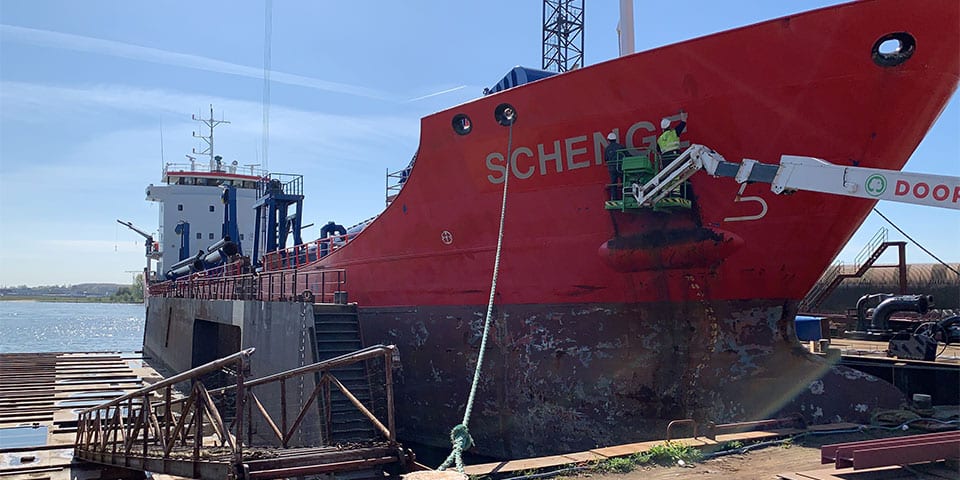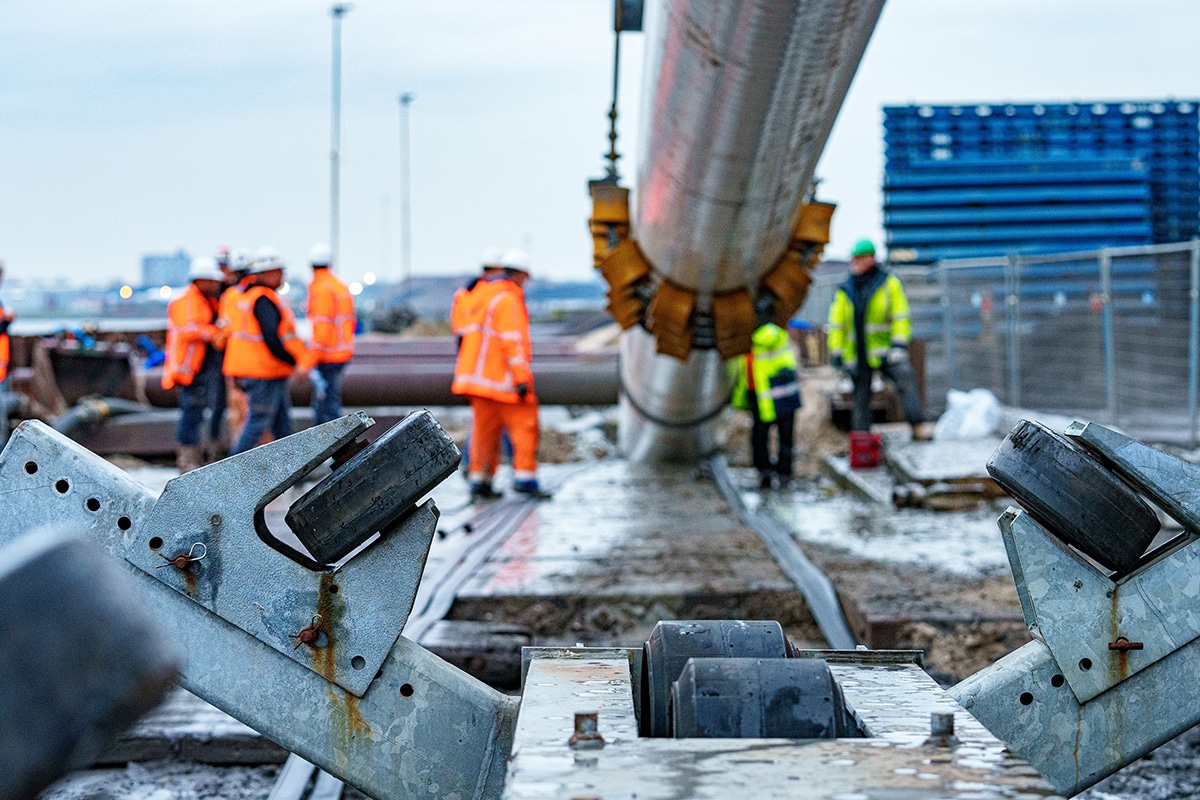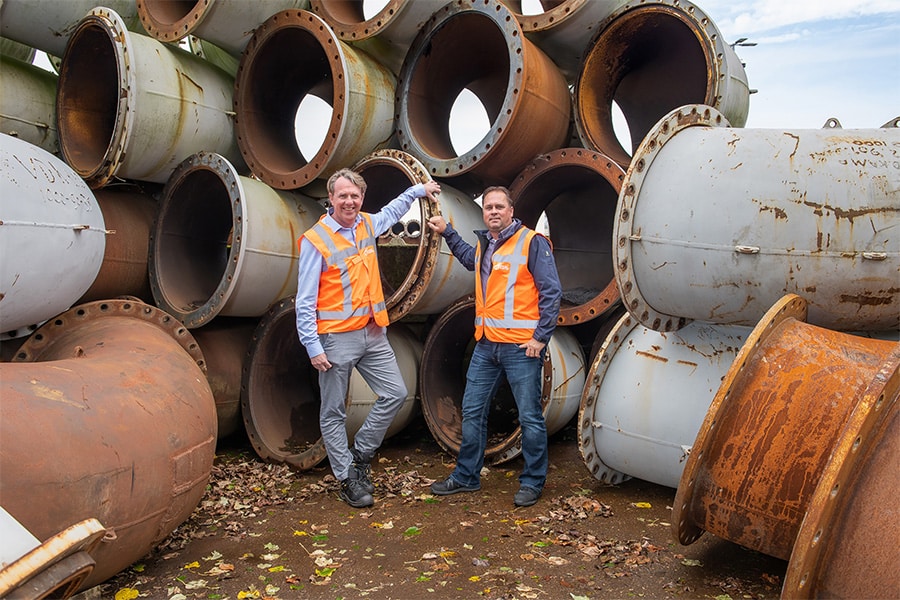
From Spanish freighter to Dutch dredger: "Schenge"
Until two years ago, the Faasse Group of Goes operated two smaller hopper dredgers. However, the company noticed a great need for a third and took action. A suitable freighter -named Mandeo- was found in Spain for conversion to a dredger. Gerard Visser, shore captain at the Faasse Group, says, "The Mandeo was the perfect hull for us. In terms of size, tonnage and other properties the vessel met the search conditions. Also, the Mandeo was originally a Dutch ship, called De Alblas, for us a sign that we were also dealing with quality."
The Faasse Group first made the conversion plans, waited for their approval from the class office, and then started looking for a suitable yard. "We presented our plans at several shipyards, finally joining forces with Holland Shipyards from Hardinxveld-Giessendam. Their pricing was very interesting and the service optimal."
Cut from the same wood
Leendert Hoogendoorn, fellow board member at Holland Shipyards, adds: "The great thing is that both our companies are cut from the same cloth. As a family business -run by my father, my brother and I- we have the same mentality as the Faasse Group. We communicate openly and honestly, are solution-oriented and think along where we can." Visser agrees, saying, "We first wanted to look for contractors to supply dredging equipment ourselves, but Holland Shipyards had that in-house. Together we fleshed that out, with success."

Reflagging to red, white and blue
The conversion was a complex project. The Mandeo had been purchased in January 2019 and delivered by the seller in Hansweert. Eventually, the vessel went to Hardinxveld-Giessendam in July. Hoogendoorn: "The construction period was to last until the end of March 2020, the actual delivery took place on June 8. The steelwork was all finished on time, there was only some delay in the progress because we had to wait for some subcontractors."
"After delivery, commissioning and bringing the ship under class with Lloyds Register awaited. A time-consuming whole, but fortunately the ship was able to stay at Holland Shipyards from delivery to the end of all the paperwork and use the facilities there. Meanwhile, everything is behind us and we christened the new dredger 'Schenge'. Where did that name come from? Faasse is a 150-year-old family business, our founder started in Goes, at a location called 'Het Schenge'. The new ship is named after that, as a tribute. And for those who want to know: Het Schenge was a small river from Lake Veere to Goes, circa 1600."
The conversion to dredger
"The Schenge features a DN700 tube. For this we had to think in a different class. Everything was engineered together with Faasse, from the steelwork in the bunker, to the dredging equipment and the loading tube. Completely developed in-house, for us a nice exercise to start broadening in this segment," Hoogendoorn explains. "The steelwork for the conversion of the beun added up to about 300 tons. We asked Faasse if we could also offer everything complete, there was no objection. So we were allowed to develop the entire cradle, the chicken cage, the drainage system, part of the jet system, the suction pipe -full-, the sieve, the loading pipe above the cradle and all the piping and steelwork completely in-house. We are proud of that!"
Proof of competence
The existing main engine is used to power all the newly installed dredging equipment. Attached to the main engine is an extra shaft generator, which provides all the electrical power to drive the dredge pump, jet pumps and hydraulics. During a trial run from Hardinxveld to Antwerp, the engine was optimally adjusted for this purpose . "In Antwerp, the vessel then received a new coat of paint and the final tests for class were done. From there a trial trip was made to our own sand extraction areas, on the Steenbank off the coast of Zeeland," Visser said. Apart from the dredging properties, the Schenge's self-unloading capability was also important. We loaded sand into the hopper and set course for Breskens, where we liquefied the sand again, then pumped it over into a barge. During several such trips, the tuning of the whole thing was optimized.
For more than 100 trips...
Meanwhile, the Schenge has been operational for some time and the ship has now satisfactorily completed more than 100 voyages. "The sailing speed of the Schenge also looks good, which makes it extra economically interesting," Visser concludes. "We do an average of two trips a day at a nice pace. And to think that some 40,000 hours went into the conversion
have sat down."




